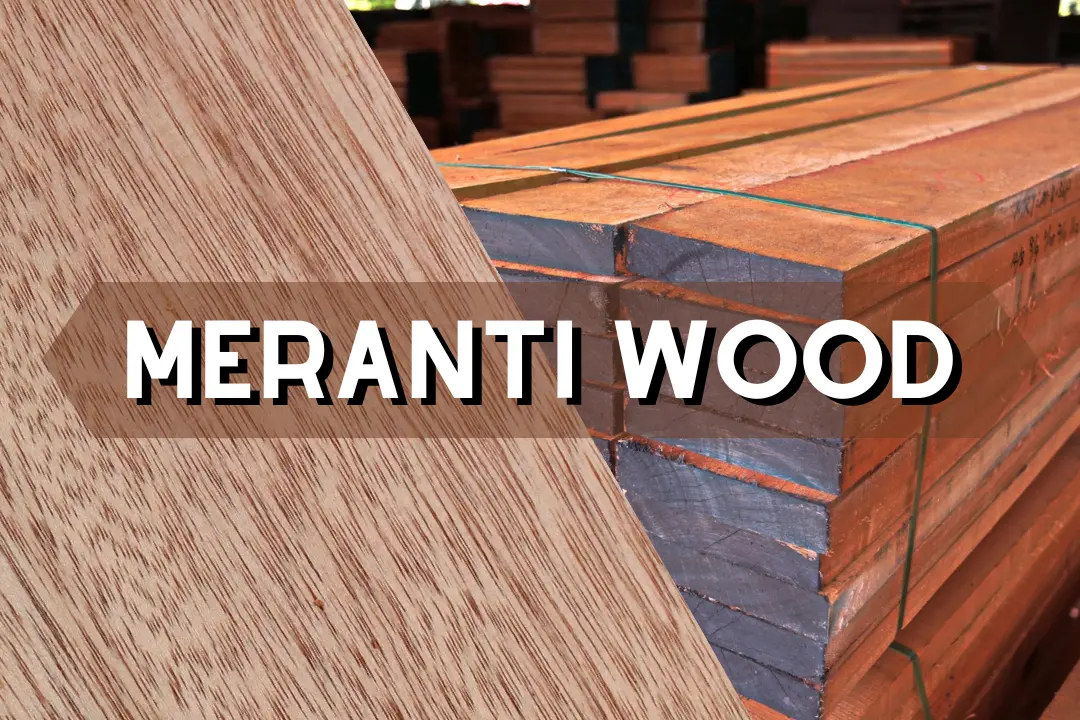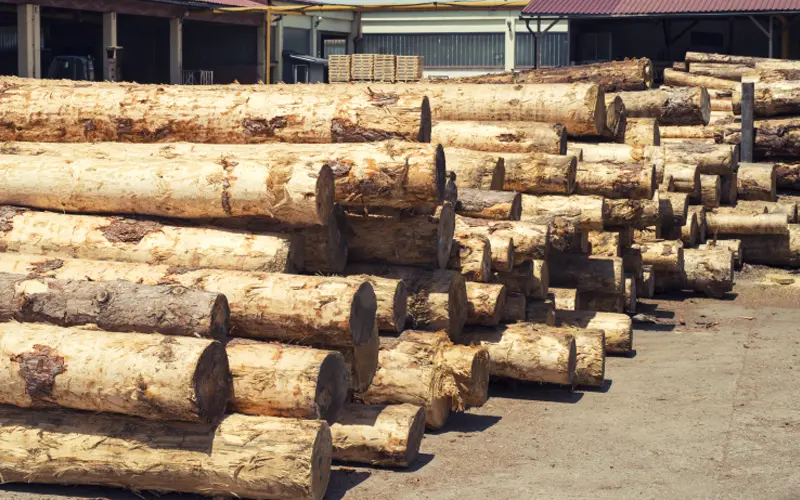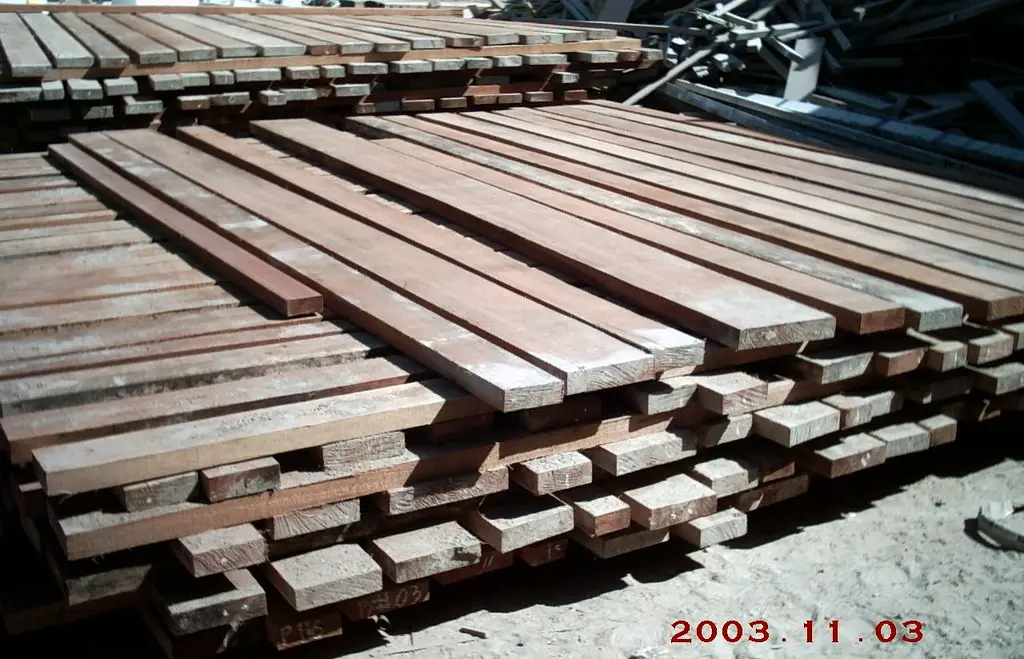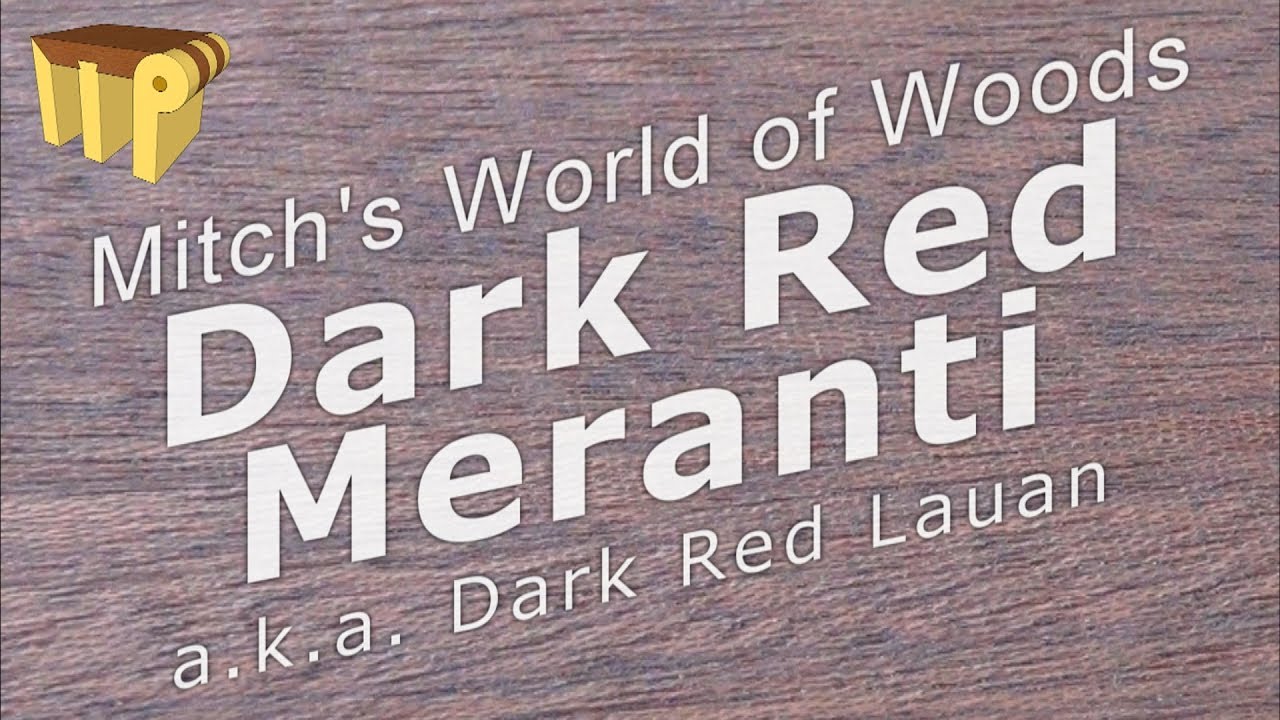
Meranti Wood: 7 Incredible Benefits You’ll Love.

Did you know that workplaces with lots of wood surfaces see a huge 81% happiness rate among workers? This shows how wood makes places feel welcoming and cozy. Meranti wood is special because it’s strong, looks great, and works well in many woodworking projects. It comes from Southeast Asia and is a tropical hardwood with many hardwood benefits.
In this article, we’ll examine seven amazing benefits of meranti wood and explain why it’s a top pick for furniture, cabinets, and building projects.
What is Meranti Wood?
Meranti wood comes from the Shorea genus, mainly in Southeast Asia. It’s known for its colors and textures, thanks to different sub-species. This hardwood is strong and durable, perfect for many uses.
There are three main types: red, white, and yellow meranti. Red meranti is most common because of its availability and quality. The wood’s color can range from pale pink to brown, attracting many woodworkers and furniture makers.
Meranti wood weighs about 36 pounds per cubic foot when air-dried. This makes it denser than Honduras mahogany. Its density adds to its durability and strength. It’s used in veneer, cabinetry, and even hollow-core doors.
This wood comes from tropical regions with well-drained soils at low altitudes. This makes it a sustainable choice for manufacturers. When choosing this wood, consider its sustainability and quality. Its versatility makes it a favorite for woodworking and construction projects.
| Type of Meranti | Color | Common Uses | Weight (lbs/cubic foot) |
|---|---|---|---|
| Red Meranti | Reddish-brown | Furniture, cabinetry | 36 |
| White Meranti | Pale pink to yellow | Plywood, paneling | 36 |
| Yellow Meranti | Yellowish hues | Interior applications | 36 |
Characteristics of Meranti Hardwood
Meranti hardwood is known for its properties of meranti wood. It’s strong and easy to work with, making it great for many projects. The wood has a straight grain and moderate hardness, which helps it stay stable.
It also resists warping, splitting, and twisting well. This makes it a durable choice for many uses.
Meranti hardwood has an average dried weight of 42 lbs/ft3 (675 kg/m3). Its specific gravity is between 0.55 and 0.68. This shows it’s a solid material without being too heavy.
With a Janka hardness rating of 800 lbf (3,570 N), it’s also very resilient. This makes it perfect for furniture making and other tasks.
The following table summarizes the key performance metrics of Meranti hardwood:
| Property | Measurement |
|---|---|
| Average Dried Weight | 42 lbs/ft3 (675 kg/m3) |
| Specific Gravity | 0.55 – 0.68 |
| Janka Hardness | 800 lbf (3,570 N) |
| Modulus of Rupture | 12,710 lbf/in2 (87.7 MPa) |
| Elastic Modulus | 1,743,000 lbf/in2 (12.02 GPa) |
| Crushing Strength | 7,070 lbf/in2 (48.8 MPa) |
| Shrinkage | Radial: 3.9%, Tangential: 7.8%, Volumetric: 12.5% |
| T/R Ratio | 2.0 |
The properties of this wood and its impressive metrics make it a top choice. It’s perfect for many architectural and decorative uses.
Durability and Longevity of Meranti
Is known for its great durability and long life. It’s perfect for many uses because it resists moisture and pests well. This makes it a top pick for both inside and outside projects.
Resistance to Weather and Pests
Meranti wood is strong against bad weather and pests. It can handle lots of rain, humidity, and sunlight without weakening. It also keeps termites and other pests away, which is great for outdoor use.
Less Maintenance Required
Keeping this wood looking good is easy. Just clean it regularly and oil it sometimes. It doesn’t need a lot of care, which is a big plus. This makes it a smart choice for those who want something that lasts.
| Property | Description |
|---|---|
| Moisture Resistance | Highly resistant to water damage and decay. |
| Pest Resistance | Natural defenses against termites and other insects. |
| Maintenance | Requires minimal upkeep; periodic cleaning needed. |
| Longevity | Life expectancy of 50 years or more when properly maintained. |
Meranti Wood: Aesthetic Appeal
Meranti is loved for its beauty in woodworking and design. It comes in a range of colors, from light pink to dark reds and browns. This variety lets craftsmen make unique pieces that match many decor styles.
Grain Patterns and Colors
Is also known for its stunning grain patterns. These patterns add to its beauty, making it great for furniture and cabinets. Designers can create amazing pieces with different finishes, boosting the look of any project.
Enhancing Interior and Exterior Spaces
Meranti wood is versatile and works well in many uses. It’s perfect for making doors, window frames, and moldings. These items add beauty and function to both inside and outside spaces.
Its strength against warping and decay also makes it good for outdoor furniture and decking. This means its beauty lasts even in tough weather. So, meranti wood makes many places look more elegant.

Cost-Effectiveness of Meranti Wood
Meranti wood is a top pick for those looking for economical wood options. It’s cheaper than hardwoods like teak and mahogany. This makes it a great choice for many projects without breaking the bank.
Is versatile and works well in many areas. It’s used in cabinetry, wall panelling, and furniture. It comes from Southeast Asia, which keeps its price low. Meranti marine plywood is also a cost-effective option for boat builders.
While it’s not as weather-resistant as some woods, treated Meranti wood works well outdoors. It’s a good choice for many woodworking projects. It’s easy to work with and comes in a variety of colors.
In summary, Meranti is a great choice for those who want quality without spending too much. Its performance and affordability make it a top pick for many woodworking projects.
Meranti Plywood Versus Other Options
Looking at Meranti plywood comparison shows its unique spot among plywood options. It’s light but strong, perfect for projects needing easy handling and quick setup. Its ability to resist warping and have a smooth finish is great for painting or veneering.
RevolutionPly® plywood stands out as a top choice. It’s made from trees grown in 7 to 10 years, unlike meranti which might harm forests. RevolutionPly® looks the same in every sheet, which is key for projects needing uniformity.
How the plywood is packed is also key. RevolutionPly® comes in special bags and boxes to keep it safe. This is different from Meranti, which might get damaged during shipping because of weak packaging.
| Feature | Meranti Plywood | RevolutionPly® Plywood |
|---|---|---|
| Sourcing | Often from poorly managed, non-sustainable sources | Made from sustainable wood sources, harvested in cycles of 7 to 10 years |
| Appearance | Varies significantly between shipments due to different sub-species | Consistent appearance with 100% uniform color |
| Packaging | Weak covers with no corner protection | Breathable, waterproof poly bags and corner guards for protection |
| Applications | Common in general woodworking | Recommended for flooring underlayment, cabinetry, and millwork |

In short, meranti plywood has its benefits. However, options like RevolutionPly® show the importance of sustainability, consistency, and packaging. These are important when choosing plywood options today.
Meranti vs Other Woods
Exploring meranti wood against other types reveals key differences. Each wood has unique qualities for different needs. Here, we compare Meranti with popular alternatives, highlighting their features and uses.
Meranti vs Mahogany
In the meranti vs mahogany debate, looks matter a lot. Mahogany is loved for its deep colors. But Meranti is cheaper and more versatile. Meranti’s Janka hardness of 800 lbf is close to mahogany’s 900 lbf, showing meranti is durable for many uses.
Meranti vs Okoume
The main difference between meranti vs okoume is weight and use. Okoume is lighter, great for the sea because it resists water. Meranti is stronger and better for furniture and cabinets, with a Janka hardness of 800 lbf and bending strength of 17761 psi.
Meranti vs Sapele wood
The comparison of Meranti and Sapele shows interesting contrasts. Sapele’s grain and color make it beautiful. Meranti is cheaper and easier to work with, making it popular for many projects. Sapele is harder, but Meranti’s weight makes it a good choice for designs.
Meranti vs Pine
The Meranti vs Pine comparison is clear. Pine is soft and prone to damage. Meranti is a hardwood, more durable and stable. Meranti’s lower shrinkage makes it better for lasting projects.
| Wood Type | Density (lbs/ft³) | Janka Hardness (lbf) | Bending Strength (psi) |
|---|---|---|---|
| Meranti | 42 | 800 | 17761 |
| Mahogany | 37 | 900 | 11514 |
| Okoume | 30 | 350 | NA |
| Sapele | 42 | 1510 | 17895 |
| Pine | 36 | 690 | NA |
Applications for Meranti Wood
Meranti wood is versatile and highly valued. It’s perfect for furniture and flooring, combining beauty with practicality.
Furniture and Cabinetry
Furniture made from meranti wood is known for its beauty and strength. Its natural look and warm colors add charm to any room. Meranti furniture is durable, ideal for homes and businesses.
It’s not just for simple pieces. This wood is also great for detailed cabinetry. This ensures both style and function in storage.
Flooring and Decking
Meranti wood flooring is gaining popularity indoors and outdoors. It stands up well to different environments. The wood’s natural oils protect it from moisture, making it perfect for decks.
People love its beauty and how easy it is to care for. Meranti wood flooring stays lovely for many years.
| Property | Value |
|---|---|
| Crushing Strength | 7,070 lbf/in² (48.8 MPa) |
| Modulus of Rupture | 12,710 lbf/in² (87.7 MPa) |
| Average Dried Weight | 42 lbs/ft³ (675 kg/m³) |
| Janka Hardness | 800 lbf (3,570 N) |
| Elastic Modulus | 1,743,000 lbf/in² (12.02 GPa) |
| Specific Gravity (Basic, 12% MC) | .55, .68 |
| Shrinkage | Radial: 3.9%, Tangential: 7.8%, Volumetric: 12.5%, T/R Ratio: 2.0 |
Potential Drawbacks of Meranti
Meranti wood is popular for its low cost and good looks. Yet, it has some downsides that might affect its use in certain projects. One big issue is its Janka hardness rating, which is about 800 lbf. This means meranti is softer than many hardwoods, like oak and mahogany, making it less durable.
This wood also has a problem with insects. Its softness makes it more vulnerable to damage than harder woods, like cedar. This could mean it doesn’t last as long and might need extra treatments to stay strong.
Also, meranti doesn’t handle moisture as well as some hardwoods. So, using it outdoors might need extra care and treatments to last longer.
There are over 200 types of meranti, each with similar traits. This makes it hard to pick the right one for a project. It can lead to the wrong wood being used for the job.
Knowing the downsides of this wood is key for those thinking about using it in their projects.
Conclusion
This guide shows why meranti wood is a top pick for woodworking. It looks great, is affordable, and lasts long. It’s perfect for furniture, floors, and cabinets.
Meranti wood’s natural beauty and strength make it great for daily use. It keeps looking good even when used a lot.
While it can fade, its many benefits make up for this. It works well in many places, making it great for homes and businesses. This makes Meranti wood a favorite among builders and designers.
This wood is perfect for those who want something that looks good and lasts. Its mix of cost and durability makes it very popular in woodworking.
FAQ
What is meranti wood?
Meranti wood comes from trees in the Shorea genus, mainly from Southeast Asia. It’s a hardwood with various colors and textures. You can find it in red, white, and yellow shades.
What are the benefits of using meranti hardwood?
Meranti hardwood is strong and durable. It’s versatile for many uses. It also resists moisture and pests well. Plus, it looks great, making furniture and buildings more attractive.
How does meranti plywood compare to other plywood options?
Meranti plywood is both light and sturdy. It resists warping well and has a smooth finish. This makes it a budget-friendly option compared to marine plywood.
Is meranti wood suitable for outdoor use?
Yes, meranti works well outdoors. It naturally fights off moisture and pests. But, treating it properly will make it last longer.
What are the aesthetic qualities of meranti wood?
Meranti has beautiful grain patterns and colors. It ranges from light to dark tones. This makes it perfect for creating beautiful furniture and cabinetry.
How do meranti and mahogany compare?
Both woods are lovely, but mahogany is pricier and harder to find. Meranti is more affordable and versatile. It’s a better choice for many projects.
What are the potential drawbacks of meranti wood?
Meranti might fade in color with too much sunlight. It’s also not as good in very wet places as some other hardwoods.
How do I maintain meranti wood?
Keeping meranti simple. Just clean it regularly and oil it sometimes. This keeps it looking and feeling great.
In what applications is meranti wood most commonly used?
Meranti is often used for furniture, cabinetry, flooring, and decking. Its beauty and durability make it a popular choice.


